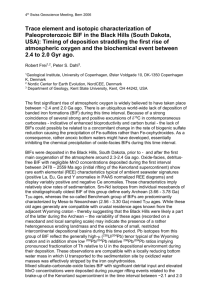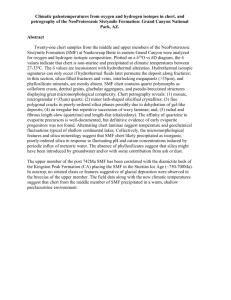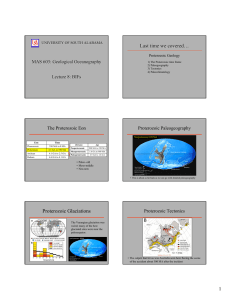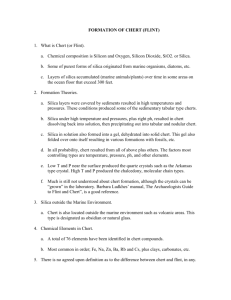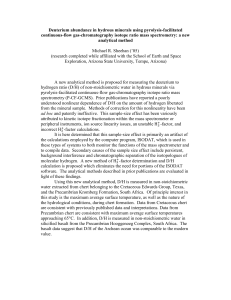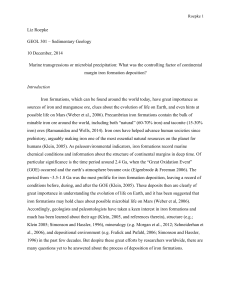Banded Iron Formation and Destruction
advertisement
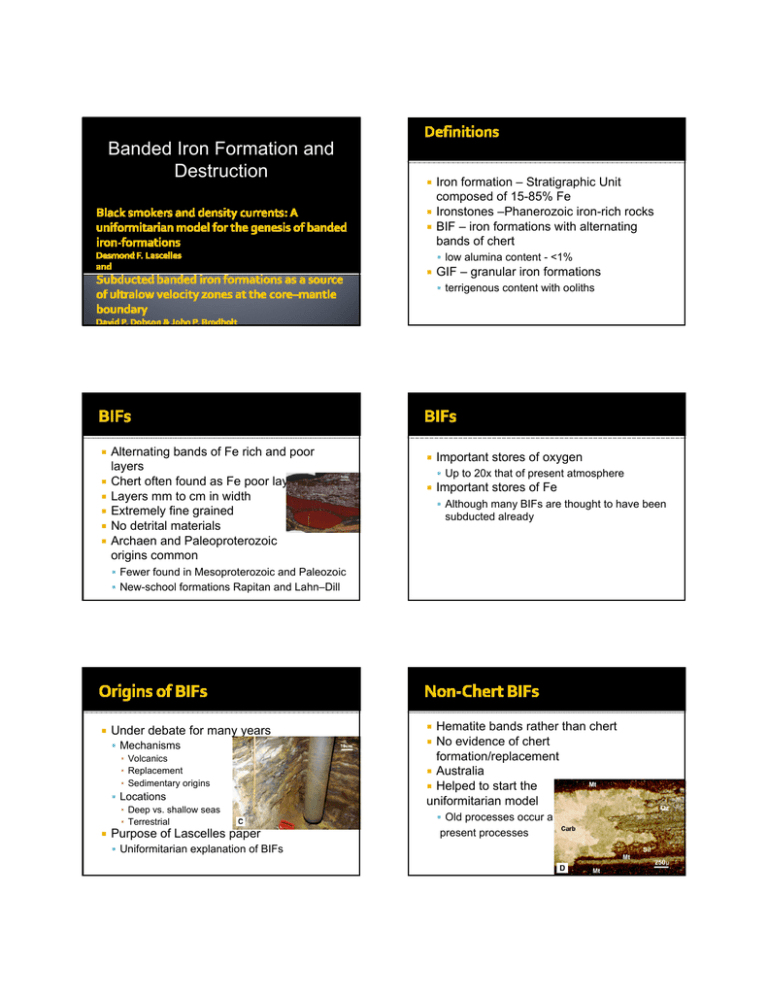
Banded Iron Formation and Destruction Iron formation – Stratigraphic Unit composed of 15-85% Fe Ironstones –Phanerozoic iron-rich rocks BIF – iron formations with alternating bands of chert low alumina content - <1% GIF – granular iron formations terrigenous content with ooliths Alternating bands of Fe rich and poor layers Chert often found as Fe poor layers Layers mm to cm in width Extremely fine grained No detrital materials Archaen and Paleoproterozoic origins common Important stores of oxygen Important stores of Fe Up to 20x that of present atmosphere Although many BIFs are thought to have been subducted already Fewer found in Mesoproterozoic and Paleozoic New-school formations Rapitan and Lahn–Dill Under debate for many years Mechanisms ▪ Volcanics ▪ Replacement ▪ Sedimentary origins Locations ▪ Deep vs. shallow seas ▪ Terrestrial Purpose of Lascelles paper Uniformitarian explanation of BIFs Hematite bands rather than chert No evidence of chert formation/replacement Australia Helped to start the uniformitarian model Old processes occur as present processes BIFs are used in models attempting to predict Paleoenvironments ▪ [CO2] ▪ [O2] ▪ [Fe] ▪ [Si] Unless their formation is understood these models are irrelevent Used evidence from Fe formations today Applied processes to Archaen conditions Black smokers Spreading centers Sites of volcanism Fig. 2. Unweathered chert-free magnetite BIF, Mt. Gibson. Start of coring at bottom left. The first two trays are nearly pure magnetite with abundant iron silicate in third and fourth trays giving lighter gray color. Chert bands arrows) are only present in the last three rows of core at the extreme right, length of tray 1m Hydrothermal vents & seafloor spreading centers Deep water environments Distributed with currents – slumping mounds Fe is supersaturated in anoxic conditions Precipitate when oxygenated env’t evolves as insoluble iron oxides (FeO) form Falls out of solution around vent areas Colloidal suspensions Today’s oceans and atm is different Ferrous Iron reacts with dissolved silica Forms hydrous Al-poor, iron-rich silicates Additions of Fe from pre-O2 terrestrial and atmosphere Fe saturation occurred and precipitates (especially) around vents were common Density currents distributed Fe deposits Silicate replacment leads to chert-free BIFs Silicate/water reactions lead to chert BIFs Chert content suggested to be linked with silicate-bearing organisms “Snowball-Earth” implications ocw.mit.edu Other Questions? Destruction of BIFs BIF explaination for ultralow-velocity zones (ULVZs) nai.nasa.gov 9 Must be negatively buoyant in mantle Constituents must stick to CMB Chemical changes may occur… but Must persist at CMB without dissociation for 3Gyr Based on angle of subduction and time Physical properties consistent with ULVZs taken totemp enter CMB…. Melting ofthe FeO is 5000K onlyto Volume of subducted BIFs must beso similar No first-hand available ULVZs solid-state Rxmeasurement would destroydata BIFs… 9 9 •P-wave velocity used – distance a plume extends into mantle •5- to 40-km-thick region at the base of the mantle •P-wave velocities depressed up to 10% from overlying mantle •This area is termed the ultra-low-velocity zone (ULVZ) Additional mapping of CMB Determine proper sound velocity for FeO Not all regions documented Used MgO and physical properties to make current assumptions 9 Depending onallthe velocity Although not of sound CMB has beenmodel used –FeO has bulk sound velocity of observed about 9.3 km/sproperties appear to be BIF formation Consistent properties of ULVZs… within rangewith of ULVZs 9
